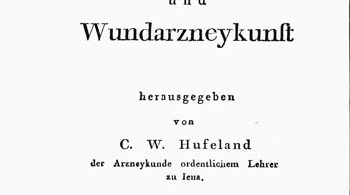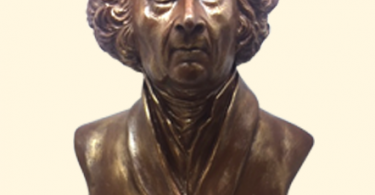(A paper read to the Faculty of Homoeopathy on 23 May 1974)
Ophthalmology is said to be the Queen of specialities and Homoeopathy sits
upon her head as a jewelled crown. Ophthalmic therapeutics tends to be limited in the ordinary run of out-patients work to anti-biotics, miotics, mydriatics,and decongestants. This of course, too great a simplification but in practice one is amazed how often one repeats a limited number of drugs and procedures far more frequently than others. In Homeopathy, one has a far greater range of therapeutics and therefore a greater interest in problems to be tackled and a great confidence of being able to cope with them.
There is one unique feature about eyes and that is the way in which they
so amazingly reveal the emotions and the personality. How much is conveyed in a glance, how much we assess one another by what we read in the eyes. You can be sitting looking at a patient and listening to their history and learning so much that is going to be of value in choosing your remedy and so much is conveyed of all this through the eyes.,
Take up a lens and source of illumination and seek to examine the eye in
detail and all that expressiveness and language can no longer be received. You cannot appreciate surprise, fear, understanding, love, hate, by looking at the iris under a magnifying lens. It never ceases to amaze me to experience this indefinable difference between the study of patients’ expressions as seen in their eyes and the study of the structure of the eye at close quarters. Both are so necessary and yet so different.
There is in this illustration an explanation of how Homceopathy is so open
to misunderstanding. We need to grasp every expression of the patient and
his re-action to his disease and environment as well as the study of his pathology. In ordinary medicine, it is as though we rush straight to the pathology and we do not know how to wait for the patients to express themselves, let alone interpret their expressions.
Ophthalmology lends itself so well to the science of observation and measurement. It is a crystallisation of the principles of medicine, which is, everything has to be measured. There has to be a level in the blood, something that can be felt or seen either directly or indirectly. If the diagnosis cannot be made in terms of measurable features, the patient needs a sedative or a psychiatrist. This again is an unkind over-simplification but it does contain a principle that rules much diagnostic thinking. It is amazing to find that even in Ophthalmology, Homoeopathy goes beyond this principle of mensuration to focus attention on the cure hidden in the tangle of the patient’s life itself, awaiting the delicate unravelling and arranging that your patient homoeopathic history taking will produce.
To summarise, what one learns is that there can be no true specialising in
Homceopathy because one is always dealing basically with the patient as a
whole and not a part in particular and in isolation. I say this purposely because one thing I have learned more than any other is that one has so often to use the patient’s constitutional remedy in addition to any local one. To stop these grandiose generalizations, let us give an outline of some of the remedies that have been found useful in eye diseases. My experience has been amongst chronic cases rather than the acute. I will outline the remedies on an anatomical basis:
THE EYE LIDS
Blepharitis
This is a condition that is notorious for not responding to treatment and most
of my colleagues accept the position of not attempting to treat it. There is no
overall simple remedy, each case has to be treated with the patient as a whole in view, and the following are the most commonly used remedies.
Hepar sulph. Marked ulceration of the lids with great sensitiveness to touch
even to blowing on the lids. Patients are irritable and nothing is right.
Acid. nit. These are bad and chronic cases usually with some swelling of the
lids. Patients tend to be very hungry, rather dark complexioned, enjoy driving
and oddly enough, there is frequent association of anal irritation.
Nat. mur. Affects mostly the lower lids, patchy, commonly in females with
thickening of the lid margins. They have the typical yellow complexion, self-
assertive, salt lovers, hate fat.
Silicea. The remedy I use most commonly. The blepharitis is not marked, no
thickening, and confined to the lid margin with patchy loss of the eye lashes.
They are pleasant people, soft delicate skins, apprehensive and usually some sweating of the hands and feet.
Calc. carbo Most commonly children, the blepharitis is more nasal and has
a strange characteristic of morning photophobia, but wears off about 11.00 a.m. They tend to be chalky, plump, sedentary, easily tired, pot bellied with constipation and some area of the body that perspires at night.
Calc. phos. Usually teenagers who are fidgety, like salty food, and usually
demonstrate an area in their life from which they are hiding.
Sulphur. Surprisingly few cases, they are not bothered about their blepharitis. It is part of their general untidy appearance. The blepharitis readily becomes septic, they are fat lovers, dislikers of salt, and self-important.
TWITCHING OF THE LIDS
Two useful remedies here are Agaricus and Lycopodium.
STYES
Pulsatilla is of course, the first remedy to use, but Staphisagria is useful for
recurrent styes that abort and Rhus tox. if there is much swelling and laory-
mation.
CHALAZION
Thuja 30 will resolve three out of five of these cysts. Staphis. 200 is very useful if they are very red and fleshy and Baryta carb in high potency for the small hard ones.
DACRYOCYSTITIS
Pulsatilla is perhaps the most useful remedy, followed by Silicea and Stannum. Hepar. sulph. if there is much sensitiveness to touch.
EPIPHORA
This is a very wearing condition, as over the years, patients can be very dis-
turbed by it. Some of the commonest cases are those with patent ducts and
where there is no obvious cause, or if surgery has been attempted and failed. I find that carefully selecting the constitutional remedy, given in high potency followed by Thiosinamine 3x for 14 days, repeated in another 14 days, and then wait for three months. My records show five out of six tend to clear up.
CELLULITIS OF THE ORBIT
If tears rush out on opening the lids, Rhus tox. is possibly the best remedy,
but if pus spurts out, Kali iod. is a useful remedy.
SQUINT
Gelsemium given in low potency, followed by high, has resolved a few cases
and is always worth giving during the pre-operative period of orthoptic treat-
ment. Several courses may be needed. In cases of sixth nerve palsy, Chelidonium 6 is well worth using.
REFRACTIVE ERRORS
Where the symptoms are not relieved by correctly prescribed glasses, leaving the patient complaining of smarting or burning, then Nat. mur. can be useful. If there is blurring for near work, Ruta is valuable.
PTERYGIUM
Zincum is strangely useful, especially for the active, fleshy cases with itching
and photophobia.
CORNEAL ULCERS
Hepar sulph. is the first remedy for severe cases with hypopion, but always
has to have the modality of being sensitive to touch or cold. Mere. sol. is a
useful remedy, the pain being worse at night and the discharges irritating the
lids. Pulsatilla and Rhus tox. are also often used.
DENDRITIC ULCERS
Always remember Conium in high potency, especially when glands are enlarged. Ipecac. and Hepar sulph. are useful.
CHRONIC SCLERITIS
Thuja is often the first remedy to think of and especially if there are no characteristic symptoms. Silicea also helps a number of cases, but it is rarely possible to clear up a chronic case without giving a constitutional remedy.
IRITIS
In acute cases, Belladonna and Aconite are usually needed, but one of the most useful remedy is Mere. cor. and also Kali iod. in that order. For iritis following surgery, Rhus tox. is useful.
Chronic recurring cases
Here a careful search must be made for the constitutional remedy and also
the nos ode of any previous disease that can be related to the iritis. It is a great relief to be able to treat these chronic cases without having to use steroids.
CHORIOIDITIS
The approach as for chronic iritis also applies here, but in addition, there are
four useful remedies: Aurum, especially if there is depression, Phosphorus,
Kali mur. and Arsenicum alb. The latter has the peculiar pointer that everything appears green.
DETACHMENT OF THE RETINA
I have only found three remedies of any value. One is Apis for the balloon
detachments. Gelsemium especially if following surgery and Arnica for trau-
matic cases.
RETINOPATHIES
This is a most interesting field, because there is little that we can do in ordinary therapeutics in the posterior segment, especially without elaborate techniques, but the constitutional remedy used in high potency followed by Ledum 200 and Lycopodium 6 have given some very encouraging results. It is well worth repeating the constitutional remedy several times a year in the diabetic cases and then more local remedies in low potency and although you will not clear up a retinopathy, you will hold many in check.
HAEMORRHAGES INTO THE RETINA
Thave not found Arnica or Hamamelis of much value, but Lachesis and Crotalus are far more useful, but never in too Iowa potency; follow them with Ledum and later Mere. cor.
VITREOUS HAEMORRHAGES
Led. pal. 3x is a most useful approach given over three-week periods with
Kali iod. in between in high potency.
CATARACT
I find as the years go by these cases become more confusing and difficult, but as a simple rule of thumb, the best I have found so far is to use G. Cinerairia Succus at night, continued indefinitely. A few cases do react; in each case, dilute the drops by 50 per cent. Calc. iod. 6 b.d. for 14 days repeated every three months is useful.
GLAUCOMA
It is not wise to tackle glaucoma unless the case is already under the care of
an ophthalmologist in hospital, but the following will help your case con-
siderably. Gelsemium both high and low, especially in acute cases and Cedron for supra-orbital pain. Ruta given in a course of low potency and occasionally high potency is useful. If pressure on the globe relieves pain, Colocynth is as useful here as in babies’ tummy aches. Above all, at least three times a year, give the patient’s constitutional remedy in high potency.
It can be seen from this rather disjointed list of remedies that Homoeopathy
can be applied yet again to any speciality and will be found to have a very
useful place.
Author: D. CALCOTT, M.R.C.S., L.R.C.P., M.F.HOM., D.O.(LOND.)
Source: The British Homoeopathic Journal, January 1975





